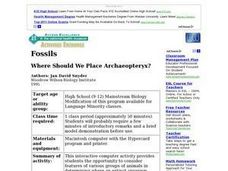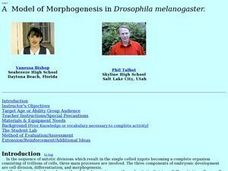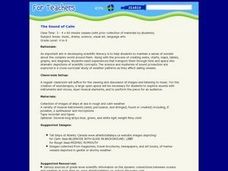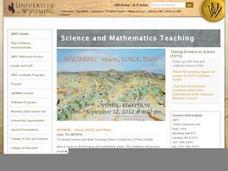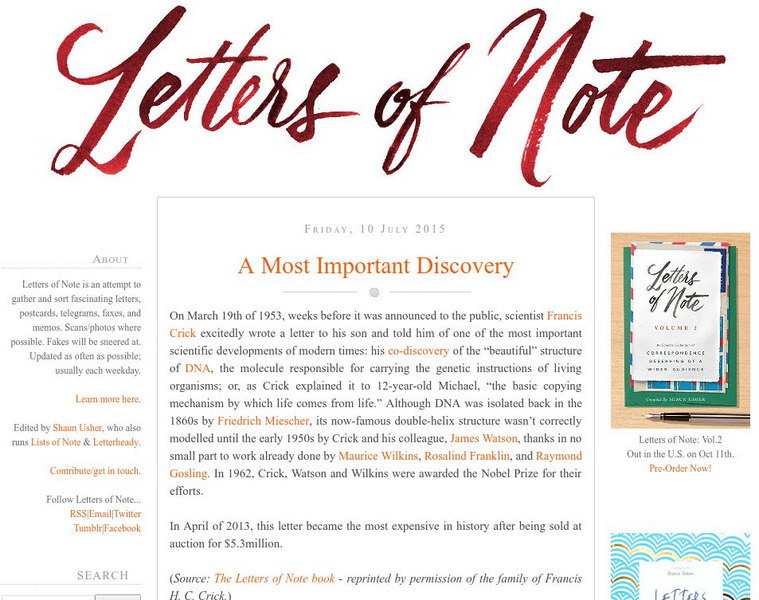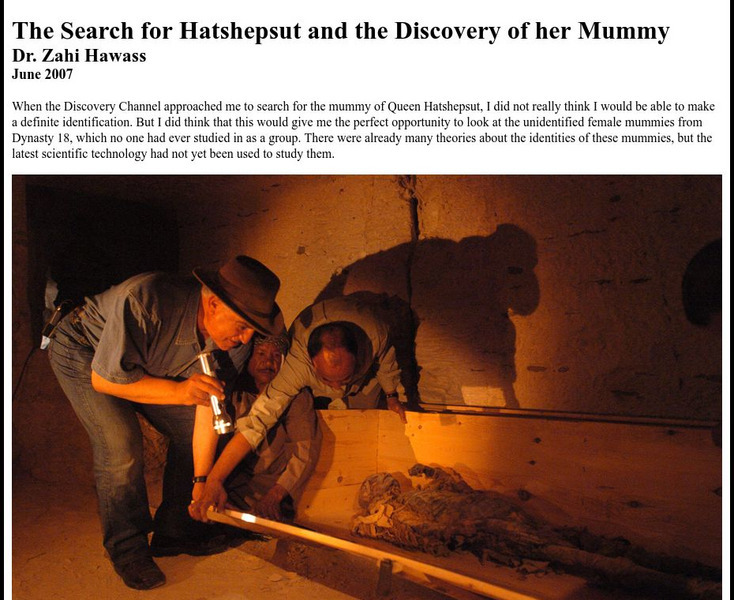Curated OER
Where Should We Place Archaeopteryx?
High schoolers classify Archaeopteryx using pictures of actual fossils and scientist representations of how the animal might have looked. They compare Archaeopteryx's characteristics to those of the five extant vertebrate groups to...
Curated OER
A Model of Morphogenesis in Drosophila Melanogaster
Students investigate the following scientific terms and ideas: rates of diffusion, the role of morphogens in the development of larva, the chemical dynamics of a cell, and the significance of embryo polarity during development.
Curated OER
Fossils-Where Should We Place Archaeopteryx?
Students explore an interactive computer activity that provides the opportunity to look at features of various groups of animals and determine where an extinct organism might be classified.
Curated OER
Like Comparing Bison and Fish
Fourth graders examine the cultures of early American Indians in North America and how geographic characteristics impacted the development of American Indian cultures. Students discuss Lewis and Clark, their journey, the Plains Indians,...
Curated OER
The Sound of Calm
Students examine the relationships that exist between ocean currents, wind and climate. Using those relationships, they discuss how they affect the oceans. They create their own music to represent the sounds of the ocean and share them...
Curated OER
Probability Plus
Students participate in a variety of activities to understand statistics. They collect and interpret data. Also students distinguish the difference between a population and a sample. They make inferences and create arguments using data.
Curated OER
Mapping The Way With Lewis & Clark
Fourth graders analyze and compare maps used on the expedition of Lewis and Clark. Students write reports about the geography of the land. They answer questions about Lewis & Clark.
Curated OER
Christopher Columbus WebQuest
Fourth graders participate in a webquest to discover more information about Christopher Columbus. In groups, they identify the main events in his life and develop a timeline for them to use in future lessons. They describe the...
Curated OER
Who Am I? Famous Scientists
In this scientists worksheet, students read a brief synopsis of a scientist, then try to identify the person, 12 total. Worksheet contains links to additional activities.
Curated OER
The Undiscovered Planet
Students find a planetary object using star fields. In this investigative lesson students determine the distance to an object using trigonometric parallax.
Curated OER
What Lies Beneath the Upper Crust?
Students discover if information in an article is accurate and current. In this science lesson, students read the story carefully and decide on what the subject of the article is. Students search the Internet to see more information...
Curated OER
What's on Your Plate?
Students travel the world. For this global studies lesson, students research selected countries and investigate their cultural traditions.
Curated OER
ESL Vocabulary Quiz-Historical Events
In this ESL vocabulary activity students fill in blanks to complete sentences about historical events. Students may click on an answer button for immediate feedback.
Curated OER
Soil Layers
Ninth graders identify the different layers of soil. In this earth science lesson, 9th graders explain how limestone layers are formed. They identify the different parts of the coral colony.
Curated OER
Local Environmental Issues: Pollution
Third graders discuss the ways in which human interaction with the environment and production of waste products contribute to pollution. Through a pollution demonstration, they explain how various groups of plants and animals can be...
Curated OER
Computer Based Energy Projects
Students use the Internet to research renewable energy. In this science lesson, students work on projects to help them understand how we use energy around the globe. Students analyze distribution of renewable and non...
Other
Children's British History Encyclopedia: Victorian Discoveries and Inventions
An organized timeline featuring many important inventions and discoveries made in Britain during the Victorian period.
Nobel Media AB
The Nobel Prize: Marie and Pierre Curie and the Discovery of Polonium and Radium
The Nobel Foundation provides a lecture given by Nanny Froman at the Royal Swedish Academy of Science in Sotckholm, Sweden. "Marie and Pierre Curie and the Discovery of Polonium and Radium" is organized into several sections including:...
Other
Letters of Note: A Most Important Discovery
Read a letter that Francis Crick wrote to his son shortly before Crick and Watson published their findings about the structure of DNA. In the letter, Crick clearly describes how the double helix structure works.
BBC
Bbc Newsround: Top 5 Amazing Space Discoveries
Read about some of the most important space discoveries in recent times.
Other
Dr. Zahi Hawass: The Search for Hatshepsut & Discovery of Her Mummy
The story of how the mummy of Hatshepsut was found and identified by Egypt's most important archaeologist.
Discovery Education
Discovery Education: Civil Rights: An Investigation
Through the lesson provided here, students will not only learn about civil rights and civil liberty but also understand the key roles played by President Johnson and Martin Luther King Jr. during the civil rights movement. The detailed...
Yad Vashem, The World Holocaust Remembrance Center
Yad Vashem: Journey of Discovery
This lesson teaches the importance of recording the names and stories of the victims of the Holocaust in order the preserve their memory. Students will view pages of testimony on victims and discuss the information contained in the...
Other
Ancient History: 10 Ancient Greek Inventions and Discoveries Still Used Today
Ten of the important inventions and innovations of the ancient Greeks are described. These include the water mill, the odometer, alarm clocks, cartography, the Olympics, geometry, Hippocratic medicine, philosophy, democracy, and...
